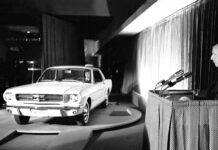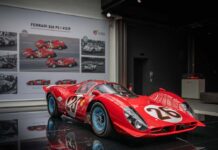Mecum Kissimmee 2024, marking the 25th anniversary of The World’s Largest Collector Car Auction®, is set to feature over 4,500 consignments and close to 50 collections. Scheduled from January 2-14 at Osceola Heritage Park in Kissimmee, Florida, this celebratory event is anticipated to surpass previous car counts, offering a diverse array of offerings.

Join the community of passionate enthusiasts, collectors, and buyers by immersing yourself in these digital catalogs, where each page holds the promise of finding that perfect addition to your collection or dream vehicle.
Mecum Kissimmee 2024 : The Main Attractions
1966 Ford GT40 MkI Road Car
LOT F155 // KISSIMMEE 2024
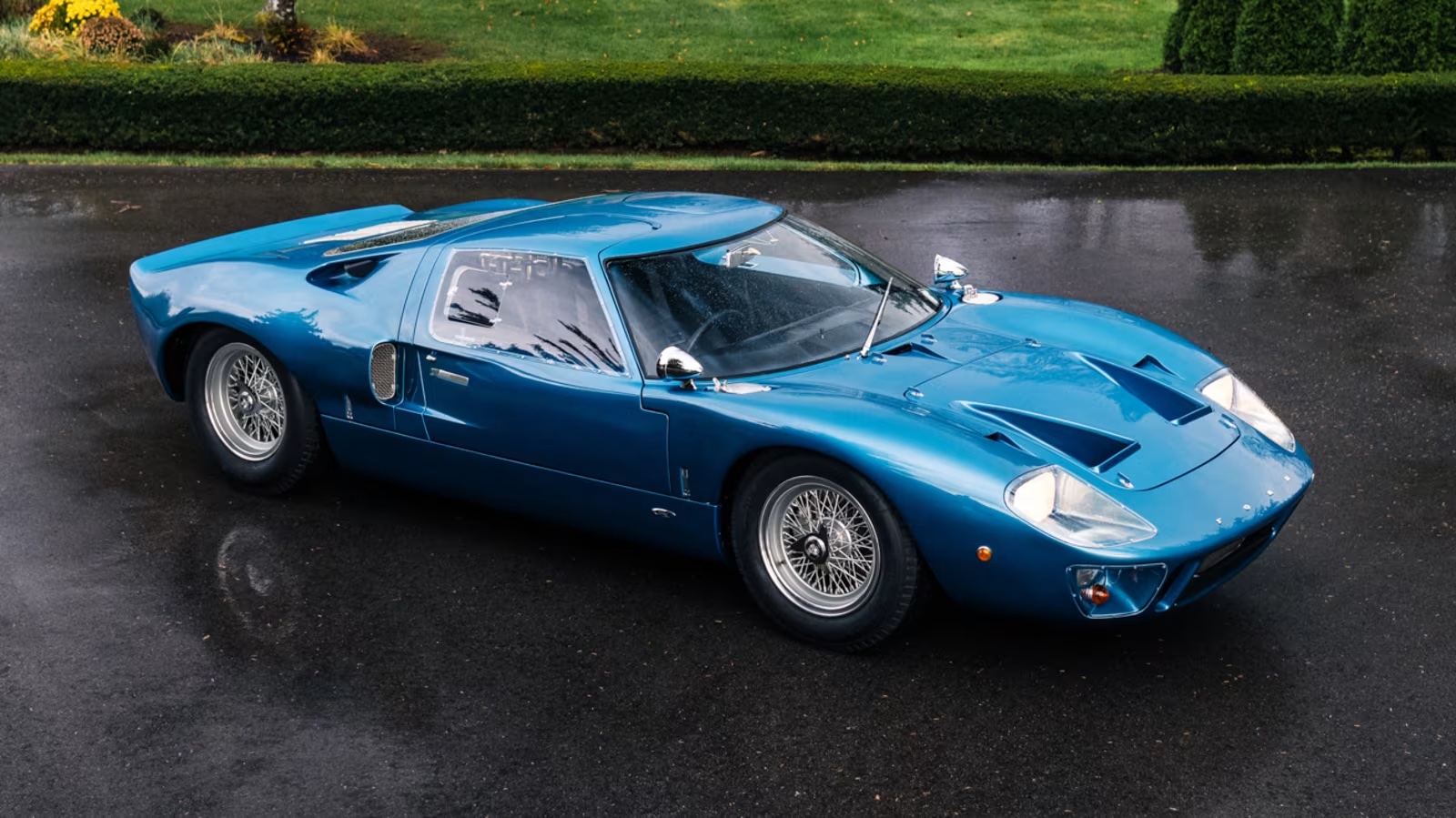
1 of 30 Original Road Cars Produced, Outstanding Original Example with 13,442 Original Miles
Perhaps the most successful and iconic American racing car ever built, the Ford GT40 has become an automotive icon to many enthusiasts. In so many ways, the GT40 helped shape automotive history by being so successful in its era against the European manufacturers who had dominated sports car racing for far too long.

When Ferrari backed out of the deal with Ford, Henry Ford II decided that if he could not buy the legendary sports car builder, he would beat them at their own game–and that is just what the GT40 did. Ferrari’s last win at Le Mans was in 1965 with its 250 LM, and at that time, Ford was just beginning to gain steam with its GT program. By 1966, Ferrari’s Le Mans dynasty was at an end, and Ford not only won, sweeping 1-2-3 in 1966, but its GT40 put America at the top of the podium at the Circuit de la Sarthe every year until 1969… . Find out more
1964 Ferrari 275 GTB/LM Competizione Speciale
LOT S195.2 // KISSIMMEE 2024
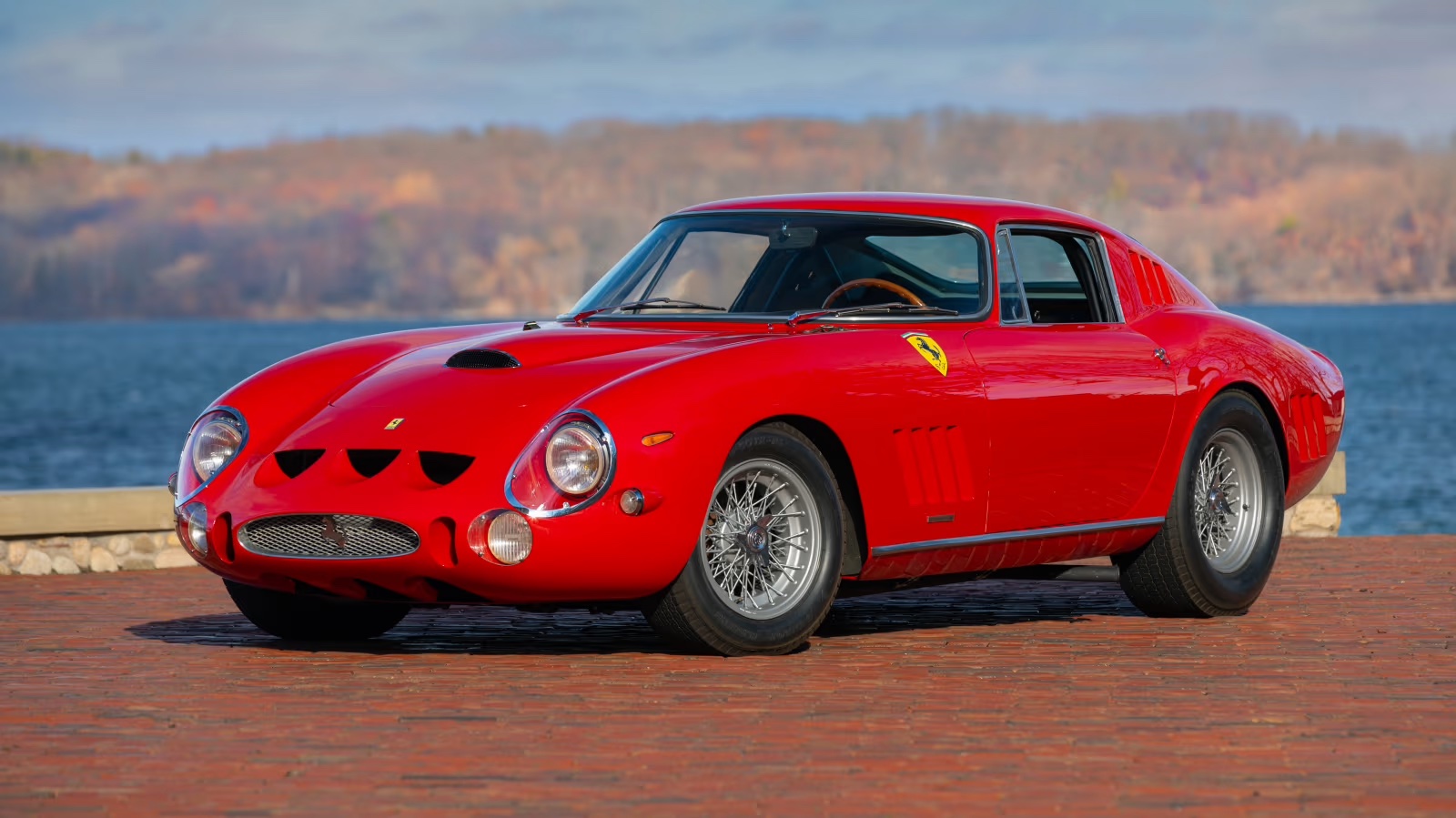
S/N 06701, 1 of 3 Produced
During the 1950s-1960s Golden Age of European GT-class racing, Ferrari dominated virtually every event, ranging from hill climbs and rallies to circuit and endurance races. The 250 GT Competition Berlinetta, immortalized as the Tour de France after scoring four consecutive wins in that grueling and diverse event from 1956 through 1959, exemplified Ferrari’s GT-class success during that glorious era. The low-production 250 GTO, the ultimate evolution of the 250 GT concept based on the 250 GT Short Wheelbase Berlinetta (SWB), garnered an impressive string of important wins across Europe and scored three consecutive GT Manufacturers’ Championships (1962-64) for Ferrari; however, its low production and specialization for racing made its homologation as a GT-class racing car a questionable and famously contentious affair with FIA officials.

Meanwhile, the rising prowess of Carroll Shelby’s Ford V-8 powered Cobra and its faster derivative, the Daytona Coupe, piloted by fast-rising American drivers, seriously threatened to unseat Ferrari by 1965. The 250 GTO’s planned successor, the 330 LMB, sometimes referred to as the 4.0L GTO, was strictly a prototype from the outset, and the radical 250 LM and larger-displacement 275 LM were denied GT accreditation by the FIA and classified as prototypes. Undaunted, Ferrari repurposed its new-for-1965 road model, the 3.3L 275 GTB, for GT-class competition. Debuted at Paris in October 1964, the 275 GTB was extremely sophisticated and well suited as the basis for GT-class competition as Ferrari’s first road model with such advanced features as 4-wheel independent suspension, disc brakes all around and ideal weight distribution courtesy of a new 5-speed rear transaxle. Find out more
1967 Ferrari 275 GTS/4 NART Spyder
LOT S195.1 // KISSIMMEE 2024
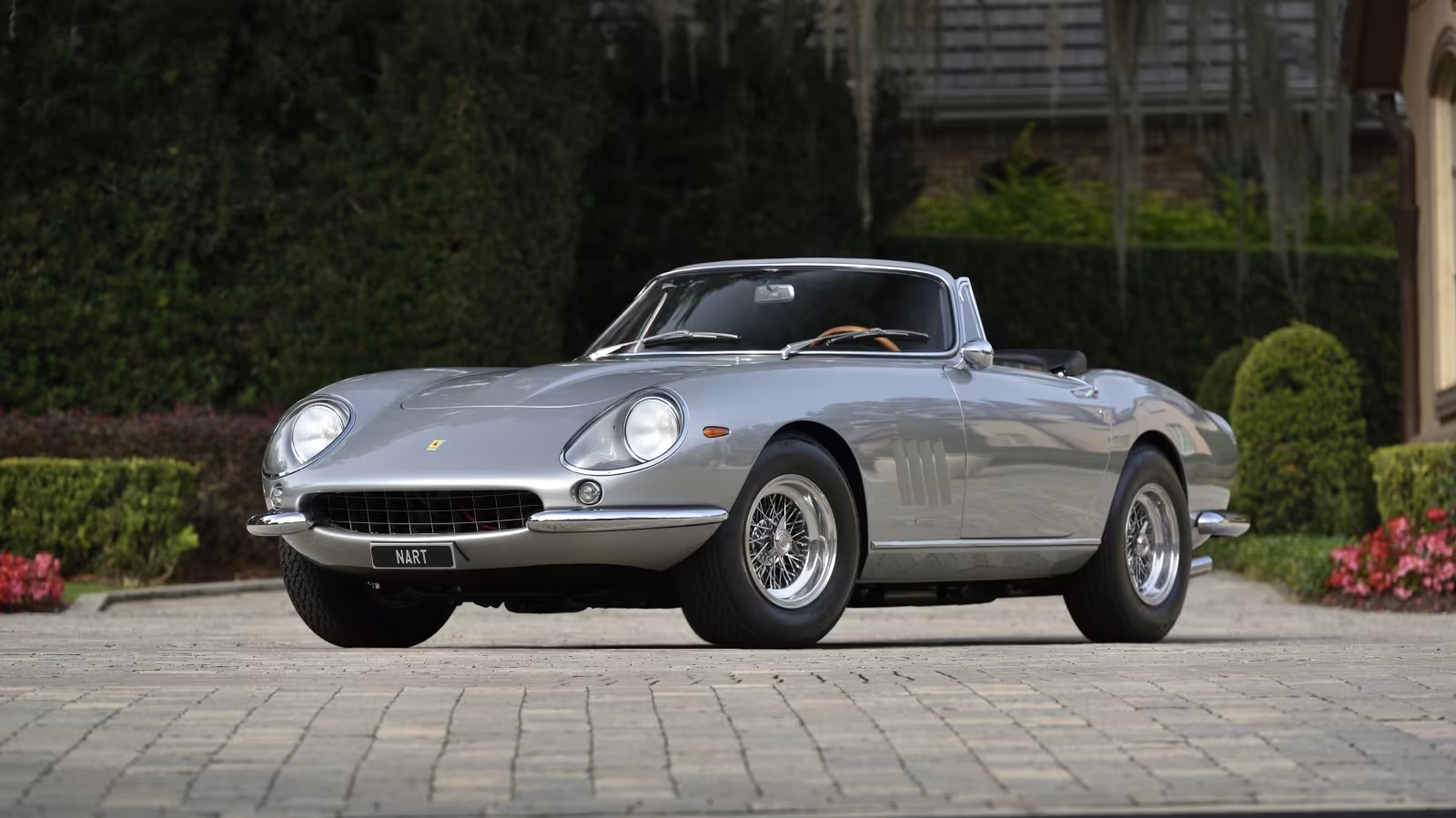
S/N 10749, No. 9 of 10 Built
Luigi Chinetti was an accomplished driver for Enzo Ferrari’s Scuderia Ferrari in Italy. Luigi was rewarded by being asked to open a Ferrari dealership in the United States. Luigi chose New York City and started what would become Ferrari North America.

The dealership catered to wealthy customers that wanted to own one of those Italian sports cars and were willing to pay for the privilege. The dealership did very well, which allowed Luigi to sponsor a racing team through his dealership. That team would be named “North American Racing Team” and use the acronym NART as its identifier. Find out more
1963 Ferrari 250 GT SWB California Spyder
LOT S195.3 // KISSIMMEE 2024
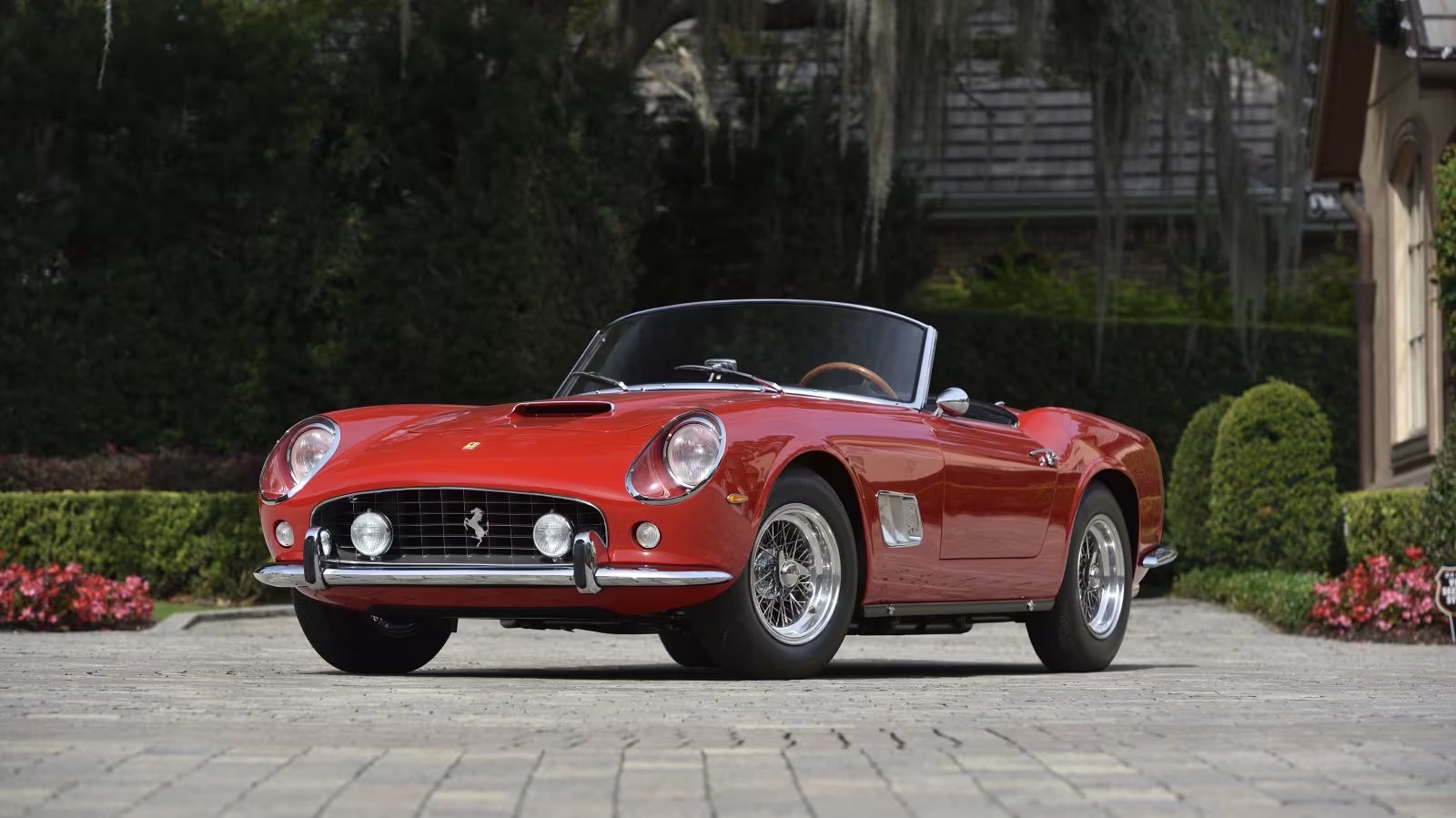
S/N 4137, The Last SWB California Spyder Built
In 1957, Ferrari wanted to produce a sportier open-top car for its customers who were looking for more performance. They were producing the 250 GT California Spyder. Scaglietti was selected to design and build the all-new body for these performance Spyders.

The formula was to use the 3.0L V-12 engine mated to a 4-speed manual transmission and place it in a lightweight chassis shod with a simple but elegant body with a retractable top. The result was the long-wheelbase (LWB) California Spyder, which was introduced in 1957 and built through 1960 with a total of 45 cars. Find out more
1987 Porsche 959 Komfort
LOT S148 // KISSIMMEE 2024
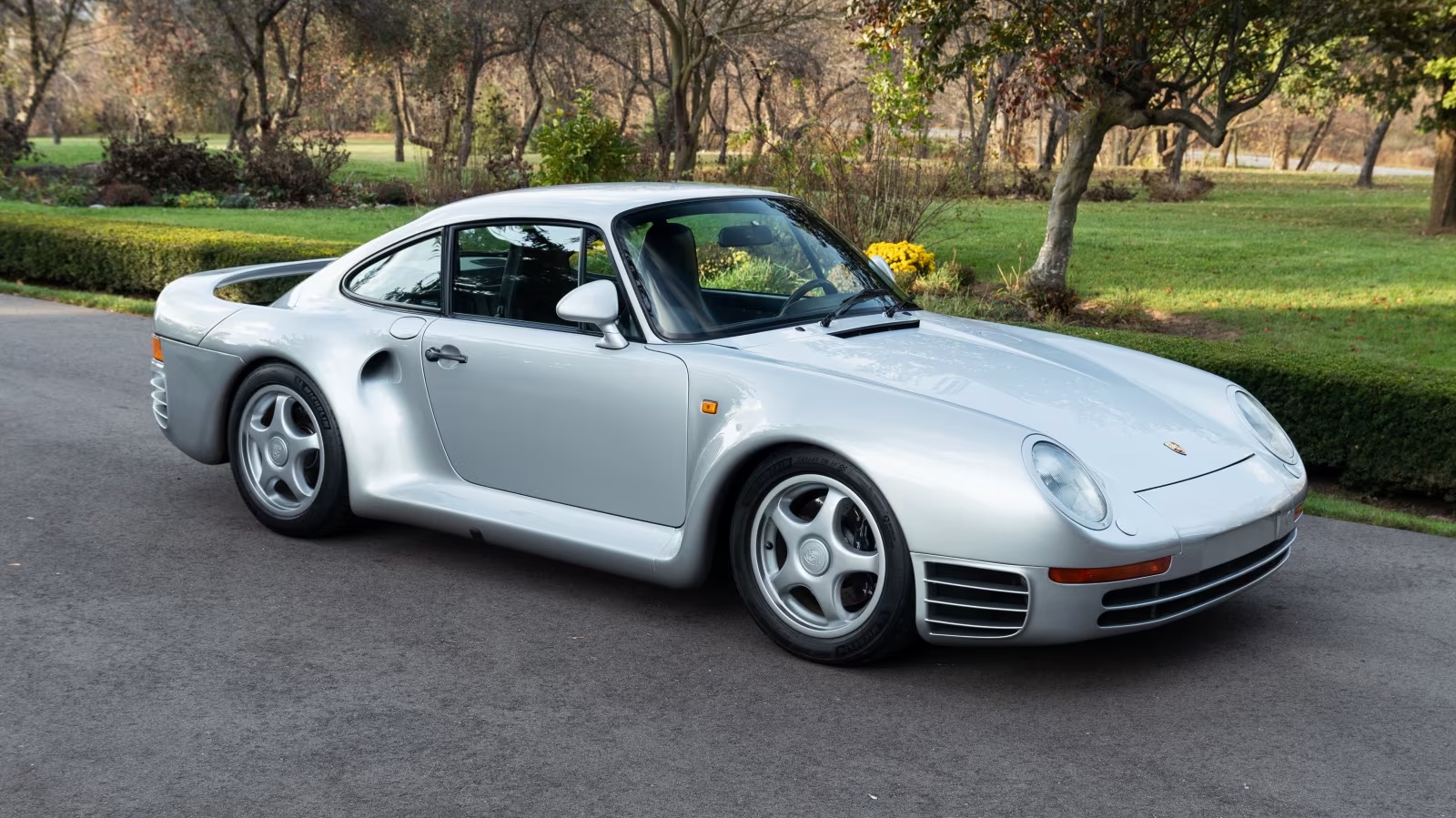
Twin-Turbo 2.85L Flat-6, 6-Speed, 14,679 Miles
The Porsche 959 redefined the sports car market in late 1980s with its many technological advancements that have since become standard on most modern supercars. In comparison to the Ferrari F40 and Lamborghini Countach, which were very raw, simple machines, the 959 had many electronic and mechanical improvements that made the 959 the most luxurious, reliable and tractable. Alongside Lamborghini’s Countach and Ferrari’s F40 and 288 GTO, the 959 was not only a “poster car” for a generation of automotive enthusiasts, but also the least produced with only 292 examples built.

Powered by a flat-6 engine derived from the successful 962 race car, the 959 used water-cooled heads instead of air-cooling as the thermal limit could not accommodate the 444 HP output of the 959.

Power was fed through a specially designed BorgWarner 6-speed transmission, which includes an extremely low “Gelände” gear for use in off-road situations, which the Type 961 rally car might have encountered. Porsche’s Porsche-Steur-Kupplung (PSK) system allowed the driver to vary the 370 lb-ft of torque between the rear and front axles, allowing up to 80% to the rear under hard acceleration, all managed electronically. Find out more
1957 Mercedes-Benz 300SL Roadster
LOT F205.1 // KISSIMMEE 2024

2996cc Inline-6, No. 526 of 618 Produced in 1957, Displayed at the 2010 Amelia Island Concours d’Elegance
Following the remarkable success of the legendary 300SL Gullwing coupe, in 1957 Mercedes-Benz introduced its successor: the 300SL Roadster. First shown to the public at the Geneva Auto Salon, the new model incorporated a strengthened frame to accommodate conventional doors, increased trunk space, the most luxurious interior of any grand-touring automobile of its time, and a new rear suspension design that vastly improved roadholding. The coupe’s Bosch fuel-injected 3.0L inline-6 engine remained in service, employing increased compression, dry sump oiling and dual coil ignition, with output increased to 225 and 250 HP and an impressive 202 lb-ft of torque. While not as aerodynamically efficient as the coupe, the Roadster could reach well in excess of 140 MPH, an outstanding figure at the time. Certainly the car by which all other grand-touring roadsters were measured, the 300SL remains at the top of every Mercedes-Benz enthusiast’s list of dream machines, especially such specimens as this first-year U.S. market example, No. 526 of just 618 300SL Roadsters manufactured that year.

Serving for 50 years as a centerpiece of the venerated Rodolfo Junco De La Vega Collection, the car was sold new through a New Orleans, Louisiana, Studebaker dealer in December 1957. Documentation shows that the car was finished in the tasteful combination of Code DB 608 Ivory with a red leather interior and black soft top. Optional equipment included the U.S. market exclusive Super-Leicht 3.89 rear end, sealed beam headlamps, a Becker Mexico radio and standard disc wheels. After a year with its second owner in San Antonio, Texas, through 1972, the car was purchased by De La Vega in 1973 as a gift for his wife, after which it was restored mechanically and refinished in her preferred combination of medium blue over a matching blue leather interior. Find out more
2020 Ford GT MkII
LOT S141 // KISSIMMEE 2024

No. 18 of 45 Produced, Hand-Built by Ford Performance and Multimatic, 3.5L/700 HP V-6
This 2020 Ford GT MkII evokes the legendary designation of the legendary Ford sports prototypes that overwhelmed Ferrari to score a momentous 1-2-3 victory in the 1966 24 Hours of Le Mans. Hand-built by Ford Performance and assembled by Multimatic of Markham, Ontario, the MkII was designed to deliver the full performance potential of the Ford GT in a track-only version engineered independent of race series rules, regulations and limitations.

Only in the MkII are the Ford GT’s extraordinary performance capabilities allowed to realize their full potential, beginning with the GT’s twin-turbocharged 3.5L EcoBoost V-6 engine. Rated at 650 HP in stock tune, the MkII version churns out a full 700 HP at 6,350 RPM, a surprising 200 more than those pesky FIA rules allow for competition versions. Power flows through a recalibrated version of the standard GT’s 7-speed dual-clutch automatic gearbox. Complementing a roof-mounted air scoop that channels airflow to auxiliary engine, oil and transmission coolers, the GT MkII’s innovative engine-cooling system also includes an outboard mounted, high capacity air-to-air charge air cooler with water spray technology to maintain consistent power across operating temperature ranges. Find out more
1967 Chevrolet Corvette L88 Coupe
LOT S168 // KISSIMMEE 2024
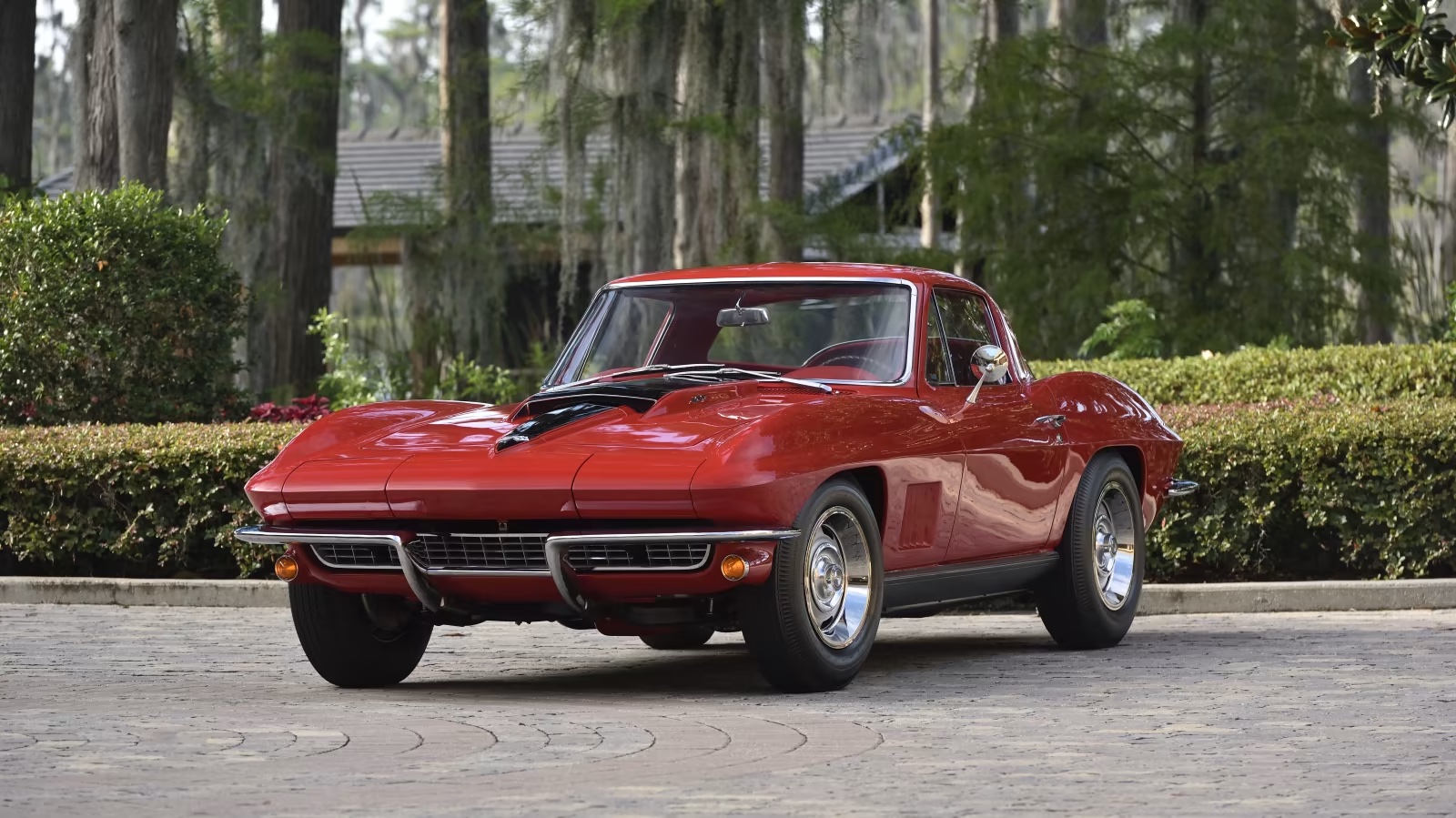
The Only Known Rally Red on Red 1967 L88, 1 of 20 Produced for 1967
Throughout Chevrolet history, certain RPO (Regular Production Order) engine codes have earned a little bit more magna cum laude than most others. One case in point: the L72 427/425 HP big-block that emerged in 1966, which became the L71 when a set of triple Holley 2-barrel carburetors jumped on, taking horsepower up to 435. Going back to 1965, the L78/396 “Porcupine” motor debuted in the Corvette and in full-size Chevrolets with 425 HP. The L79/327 was another noted engine ID—making 23 more horsepower than its cubic-inch measurement—as was the lesser well-known L84, shorthand for the 327/360 HP, fuel-injected Mighty Mouse that was the hottest of hot setups in the 1963 Stingray. The LT1, ZL1, LS6 and LS7 are also codes worth mentioning for their robust performance achievements.

And then there’s the L88. Just to say that code creates an almost musical cadence, and even those who are only remotely aware of Chevrolet’s lengthy body of work understand the significance of that simple, three-symbol cypher. Here was an engine that shook the performance high ground both literally and figuratively in 1967, enjoyed an oh-so-brief lifespan until 1969, and became the subject of innumerable accolades, bench racing sessions and hyperbolic claims of invincibility, which have diminished little over the decades. Find out more
Photos by mecum.com






